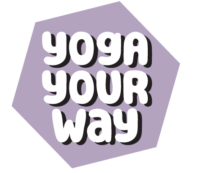My son is one of the forty million plus people in this country who have chronic sleep issues. No matter how tired he gets during the day, he finds himself wired at night, filled with anxiety, and then made more anxious by not being able to fall asleep. It’s a vicious cycle. If you find yourself similarly wired and unable to sleep, it can be helpful to practice techniques that get you out of your busy brain, shifting your attention instead to your body and breath.
Let’s look at some of these techniques.
Body scans
This involves moving your attention, slowly, from one part of your body to the next. I usually start with the toes and move up to the head, but you could also do it in reverse. As you let your attention rest on a part of your body, wait for feedback – a tingle, or vibration, or sensation of warmth, perhaps. You might start by having a short conversation with your big toe – hi – how’s the weather down there? And after your big toe “answers,” move on to, perhaps, the heel, or the entire foot. At each step, notice the sensations – temperature, pressure, moisture, texture; also perhaps tension, pulling, tingling, itching, throbbing, among others. Don’t judge the sensation – just notice it. And then let it go. Imagine that part of your body dissolving.
Breath awareness
Most of us usually don’t pay much attention to our breath. We inhale, we exhale, and that’s about it. But there are a lot of qualities of the breath worth noticing. For example, do you breathe mostly in the chest? Do your shoulders get involved in the breath? Or perhaps your breath concentrates at the lower torso? Do you expand the abdomen first and then the chest? Or the other way around?
How does the length of your inhale compare to the length of the exhale – shorter, longer, or about the same? Do you tend to hold for a second or two between the inhale and exhale, or between the exhale and inhale? Is your breath smooth, or is it ragged?
Can you feel a difference in energy between the inhale and exhale? Generally, the inhale feels more energizing, and the exhale feels more relaxing.
Notice also the different parts of your body that move as you breathe – the chest, the abdomen, the spine, perhaps the shoulders.
Contralateral focus
This means simultaneously moving, or just paying attention to, different sides of the body at the same time. It can take a bit of mental effort to do this, but that effort can pay off with improved, calm focus. One of my favorite contralateral yoga poses involves lying on your back, knees bent, feet off the floor, arms at your sides. Then as you inhale, raise the right leg straight in the air, sweep the left arm over your head to the floor behind you, and turn your head to the right. On exhale, everything comes back to the starting position. Then repeat on the other side.
At bedtime, you might want to do something a little less activating. You could, for example, lie on your back and on inhale, make a fist with your right hand and flex your left ankle, releasing both on exhale, then repeating on the other side. Or, simply hold your attention in your right hand and left ankle, release attention, and then do the opposite side.
I recorded a 29-minute practice containing these techniques to help my son which I’d like to share with you. Because my son is able to sustain a long breath, the breath focus section lengthens the breath to 8 seconds on inhale and 14 seconds on exhale, but if you find you are forcing the breath to reach that length, please back off to a shorter length. It’s more important that the breath stay smooth and easy.
Sleep well!
